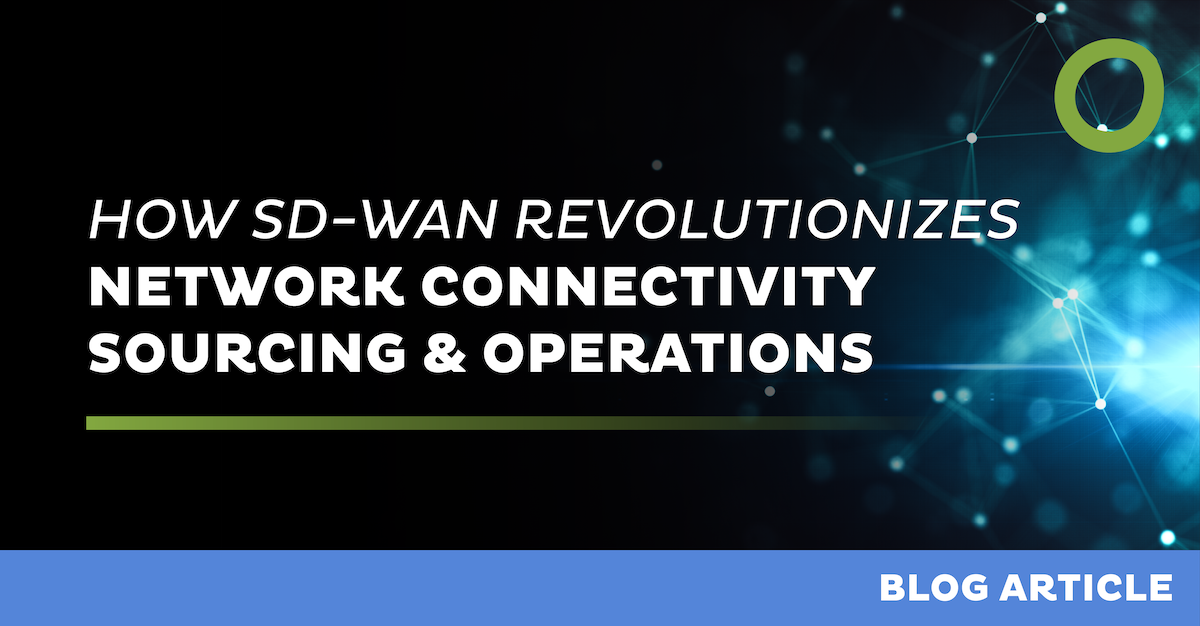
How a Hybrid WAN Can Solve Your Biggest Networking Challenges


Over a few short years, software-defined wide area networking (SD-WAN) has emerged as a valuable tool in the enterprise IT arsenal. As organizations demand greater bandwidth, performance, and security — and as they adopt new technologies such as artificial intelligence (AI) and the Internet of things (IoT) — the need for a more sophisticated networking framework has grown.
Today’s SD-WANs deliver sophisticated capabilities. They connect far-flung offices, factories, and data centers seamlessly and effectively. But a significant challenge for many organizations is moving from a legacy environment to a more advanced SD-WAN framework. This can tax already thin staff, budgets, and resources — leaving an organization behind the technology curve.
For instance, many businesses continue to use MPLS to connect physical sites within a WAN. It delivers data from one node to another without complicated routing tables. However, MPLS is complex to set up, and it is expensive. It also undermines the agility and flexibility that today’s organizations require, partly due to long lead times for circuit provisioning and structural changes to the network.
A New Era Emerges
MPLS has an important role to play. It’s not going away anytime soon. However, it’s no longer the only game in town. As organizations look to tap the power of emerging technologies — everything from augmented reality to chatbots, machine learning to 3D manufacturing — a more efficient and secure network infrastructure is required. Overlaying all of this is the need to accommodate a mobile workforce and infrastructure that increasingly connect with clouds, LTE, Wi-Fi, and other communications protocols.
Because of these new demands, a growing number of organizations are turning to a hybrid approach that taps the best of both worlds: existing investments and a more agile and flexible SD-WAN. There’s no need to re-architect systems immediately, and it’s possible to choose the best approach for specific situations.
It’s a framework made for the digital age. Organizations are looking for more efficient ways to put their IT investments to work. Just over half of enterprises (51 percent) cited reduced downtime as the biggest benefit of SD-WAN technology.1 In addition, 45 percent were attracted for security reasons and 34 percent cited reduced OpEx and personnel costs.2 In fact, Gartner found that SD-WANs can result in a cost savings ranging from 50 to 80 percent.3 This is at least part of the reason SD-WAN adoption is growing at an annual rate exceeding 76 percent.4
Making All Connections Count
If you’re looking to boost your infrastructure and network investments, consider a hybrid framework. The decision doesn’t have to be framed as “either/or” when it can be viewed as “and/both.” However, it’s also vital to recognize that all solutions are not created equal. Some vendors simply drop an SD-WAN onto an existing network. This approach typically addresses some key business problems, but it can also create new problems — especially related to consistent network performance and integrated security.
It’s important to work with a vendor that fully supports a hybrid environment. A comprehensive approach encompasses five key elements: integrated security, a high level of flexibility, maximum agility, deep visibility, and redundancy. The latter is particularly important because downtime and failed systems cost money and can contribute to lost customers. In fact, in today’s highly competitive business environment, outages and downtime are increasingly unacceptable.
A top-tier SD-WAN provider, on the other hand, can help you build a unified hybrid platform that delivers centralized management capabilities, powerful troubleshooting functions, and integrated security that reduces — and sometimes eliminates — the need for dozens of point solutions that can introduce gaps and vulnerabilities, which can undermine an enterprise.
As a result, it’s wise to look for a provider that has the expertise to design and build a next-generation hybrid framework. With the right analysis, assessment, and expertise, it’s possible to reduce expensive upgrade cycles dramatically, get costs under control, and, in the end, unlock the full value of WAN and network investments. Ideally, your provider will establish a collaborative partnership that allows your enterprise to achieve the agility, flexibility, and scalability required to gain a competitive advantage.
Learn More
For a deeper dive into the advantages of a hybrid approach to SD-WAN, download The Definitive Guide to SD-WAN ebook.
1) Enterprise Management Associates, Inc. (EMA) study. October 23, 2018
2) Ibid.
3) Gartner, SD-WAN Economics: Shift from Tactical to Strategic Thinking, February 2018
4) Gartner, Market Guide for WAN Edge Infrastructure, March 23, 2017
Leave Complexity
Behind
To learn how Open Systems SASE Experience can benefit your organization, talk to a specialist today.
Contact Us



